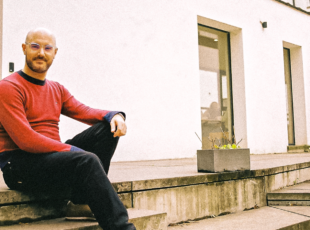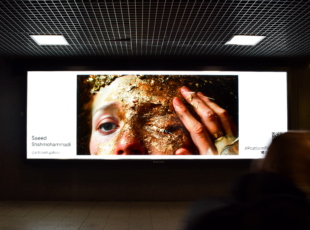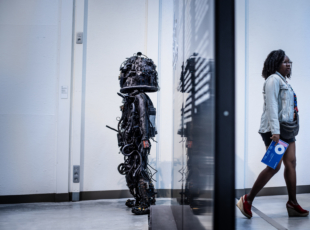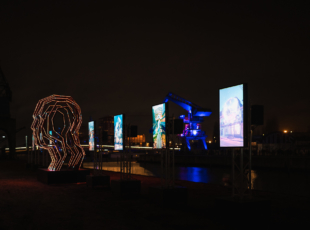Laura Colmenares Guerra, an engaged and humanist artist
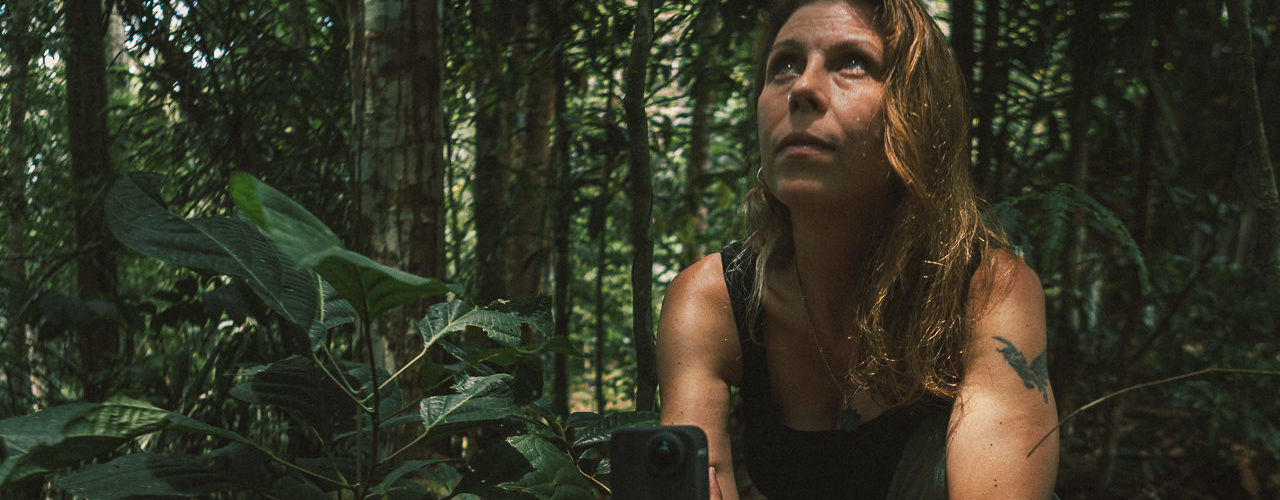
Article author :
The relationship between human beings and nature is at the heart of her artistic work. Laura Colmenares Guerra speaks out against the environmental damage being perpetrated in the Amazonian forest and explores ways of responding to it and of seeing the world of its indigenous populations.
10.00 a.m. in Bogota. Laura Colmenares Guerra arrives from Montreal, where her installation Ecdysis is being exhibited, and readies herself to venture into the Amazonian forest for her next art project. This downtime in the Columbian city where she was born is the opportunity for a rich discussion by video conference.
A love of 3D and special effects
An arts graduate from the Los Andes University in Bogota, it was in Belgium that she subsequently developed her specialised focuses. In interactive media, in compositing – an ensemble of methods fusing image sources to transform them into a single shot – and in 3D. ‘3D is the cornerstone of my work, be it printing, modelling, or animation. It is a pretty flexible medium, which I feel comfortable with’.
In the installation Lagunas, by means of shrewd special effects she blends photographs, filmed images and computer-generated images, to deliver hybrid images between the real and synthesis.
The Rios trilogy for its part is a mixture of 3D ceramic prints and 3D images. This stunning research work spanning 5 years explores the ways in which a space is mapped, taking Amazonia as an example. It can be viewed at the Capture#2 exhibition which is being held at the Namur Citadel Pavillon until January 14, 2024.
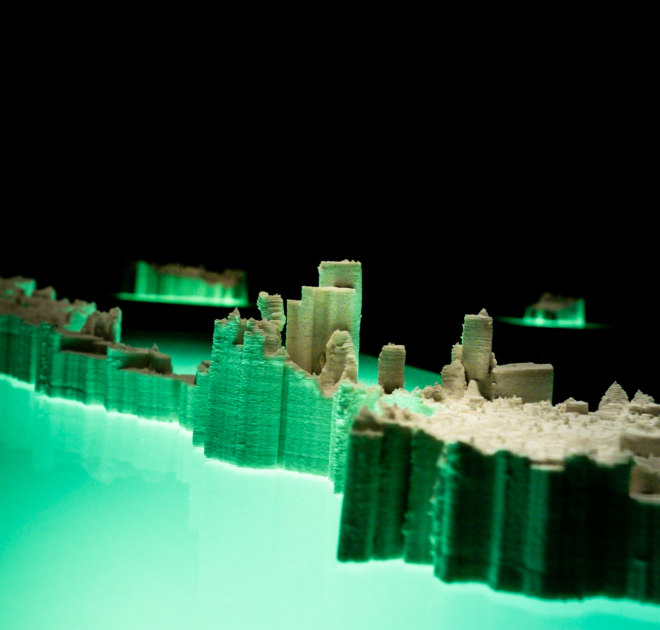
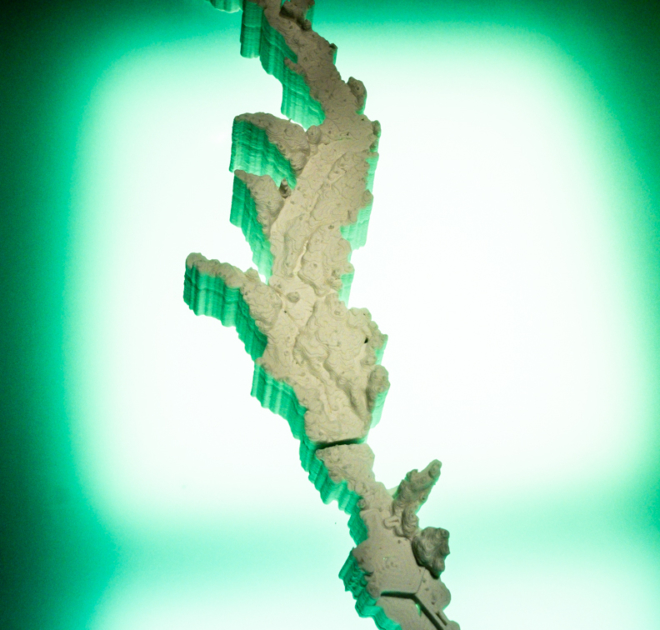

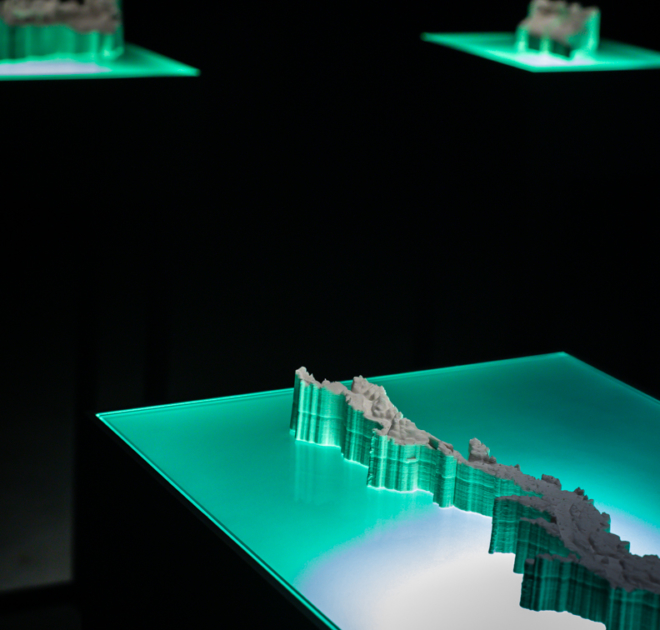
Political environmentalist reflections
‘The Rios trilogy, which I began in 2018 and completed in 2023, is the most political work I have made. I raise questions about the relationship the West has with nature, with landscapes. That is something I have been intrigued by for a long time. Already in my thesis work, I explored the landscapes found in video games, which reveal the ways in which human beings see nature,’ explains the young forty-something.
The planet’s terrestrial lung, Amazonia, a vast territory covering 44% of South America, is home to a million indigenous people and one of the largest biodiversities on the planet. And makes a key contribution to mitigating climate change. In particular in its role as a carbon dioxide sink. The Amazonian forest also produces an enormous amount of freshwater, and plays a part in controlling local but also global rainfall. Yet, in recent years this territory so precious to humanity has crystalised the tensions around major environmental, social and climate issues.
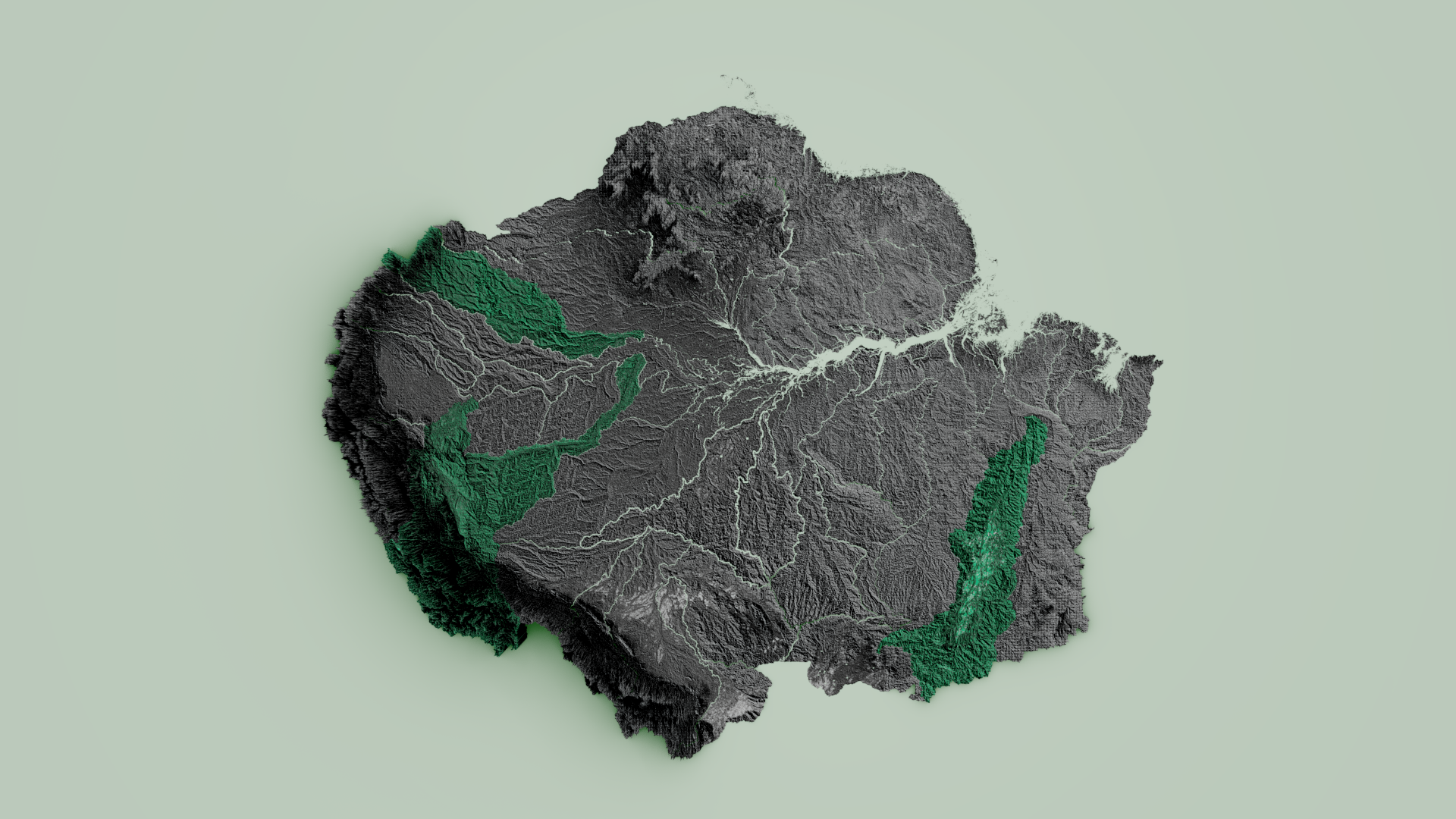
‘The Amazonian forest has a vital function for the planet. Nevertheless, some see it as a territory rich in exhaustible natural resources ripe for extraction. This utilitarian view of nature and of territory, either for the environment and our survival, or for its exploitable materials, also greatly preoccupies me’.
A dive into the threats the largest tropical forest is vulnerable to
The first chapter of the Rios trilogy takes the form of sculptures of actual topographical surveys which are 3D printed in porcelain. Each sculpture represents a distinct region of the Amazonian basin. The nuance lies in the fact that polygons can be discerned within these prints of the Amazonian relief. Through these shapes, the artist highlights the climate, social and environmental threats which affect each zone in particular. For example, oil extraction or mining, deforestation, the harmful impact on indigenous populations.
But that’s not all: these polygons can be of a small or a large size. The bigger the polygon, the more the theme has been shared on Twitter (now X) via linked hashtags. Taken as a whole, these connections implemented by the ‘Twittersphere’ allow you to see the ways in which it is reading the territory. That is the second chapter of the trilogy.
The third chapter takes the form of an immersion into the Amazon river in virtual reality. Over a period of some fifteen minutes, this reconstruction in computer generated images provides a host of highly documented information. The artist explains the threats she has identified for each district and how things currently stand. She also makes available charts produced by NGOs, enabling an immersion in the factual data for each Amazonian territory.
Linguistics to understand the relationship with nature
‘This project on the macroscale of Amazonia led me to take a much closer look, as regards the indigenous populations, at what is happening at each point in this territory. That forms the baseplate of my new project. During the month of November, 2023, I spent two weeks in Amazonia with an indigenous community which agreed to take me in. My goal was to open up a dialogue with it and to try to understand its relationship with nature’.

‘This new project talks a lot about linguistics, about how, through language, people connect to nature. In fact, the ways we talk about it define the ways we establish links. Each language has its limits and creates specific relationships’.
Today, around a million indigenous people live in Amazonia, gathered together into 410 ethnic groups, of which 82 live in voluntary isolation. They use some 300 local languages. ‘The people are often polyglot, knowing how to speak 2 or even 3 indigenous languages in addition to Spanish or Portuguese. That interests me a lot’.
‘More specifically, in this project, I will work on the sacred songs. The Amazonian peoples sing to move from one world to another. They have a view of the world which is explained by spiritual or extra-material links’.
A humanist standpoint
‘It is 3 years now that I have been working on this project. It’s the first time I have met an indigenous population, in its territory. That has been made possible by grants issued by the FWB and the Flemish cinema fund. Our work team consists of a Columbian mediator, a sound recorder, an indigenous guide and myself, with me taking care of the camera aspect’.
‘It is sensitive work, because when you talk about extracting a territory for its minerals or its wood, you cannot conceal cultural extraction. The idea is that this project is collaborative. And that everything that is extracted in visual and sound terms, is done with the consent of the indigenous population’.
‘Beyond my own artistic interest, a thought process has begun on the way the visual and sound material can be returned to the communities. The idea is also, by means of working with Oxfam, to offer training to young indigenous people, who own smartphones and use new Western technologies, in the fields of using a camera, recording sound, editing. And that they can subsequently use these techniques to defend their own interests, in particular against illegal mining, a phenomenon which is growing exponentially. This bond of reciprocity is very important to me,’ concludes Laura Colmenares Guerra.

This content is offered within the scope of Propulsion by KIKK, a digital awareness project for and by women.
A story, projects or an idea to share?
Suggest your content on kingkong.

